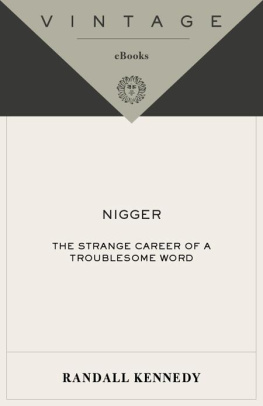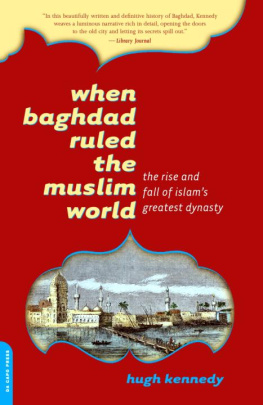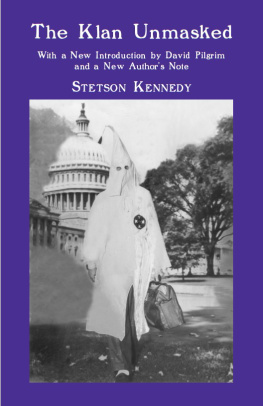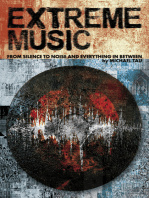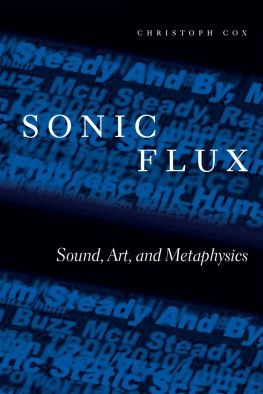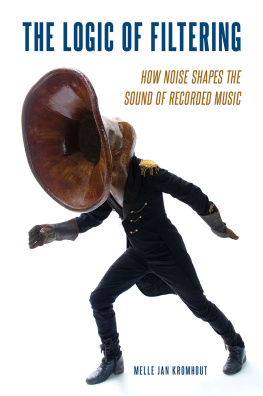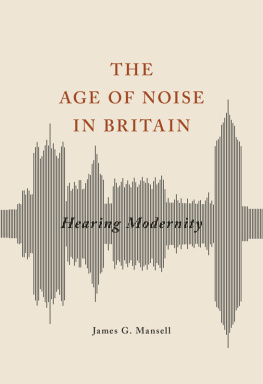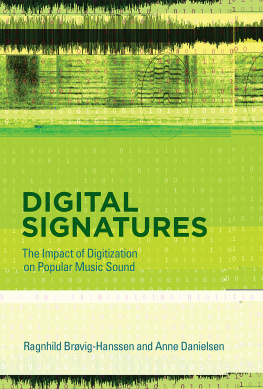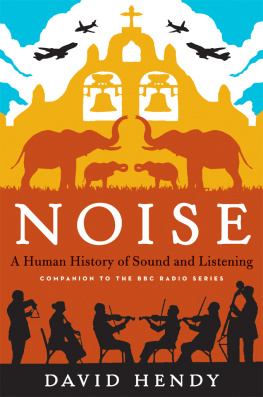Future Sounds
For Gemma Lori & Erin

Contents
Future Sounds is a book about time and about history. It also explores the possibility of extricating ourselves from the dialectical bind that keeps the audible and the visual separate but related in ever shifting ratio. Escaping from this bind, it is proposed, will allow for a more nuanced and inclusive engagement with many of the urgent questions that are present in the digital age. By employing the figure of noise, defined as the presence of everything all at once, the strictly linear account of time and historical progression can be avoided. In its place will be a multisensory, multitemporal account where established dualisms are forced into ever-closer association if not collapsed altogether.
Notions of linearity and temporal succession will be juxtaposed with a series of reflections that both challenge and augment Jaques Attalis thesis that music is a herald and that it precedes that which will later become manifest in the realm of political economy. While Attali offers a brilliant historical analysis of music and its significance in terms of critical theory, his is a model that cannot fully account for the complex non-linearity of the contemporary digital age. Attalis model is also unable to reconcile the concerns expressed by a disparate range of theorists who are uncomfortable with the anthropocentric trope that falls back on correlationism as a way of understanding the world as it is, the world as it appears to be and the world as it should be.
Like most theoretical ventures, this book, in its attempt to correct the failings identified in current modes of analysis, is bound to ask more questions than it delivers answers, but it makes no apologies for that. Not least will it question the place of humans in the contemporary universe that vibrates incessantly creating patterns and systems that, while they resolve to calm the ensuing chaos, ultimately serve only to confirm its complexity and unpredictability.
This book sets out to explore the proposition that there exists a realm, or a temporal dimension, where infinite formulations occur and reoccur, creating patterns that can be taken to constitute the entirety of our universe. Such patterns are always in motion. They are part of an ongoing process that is chaotic and evasive, and as such they can only be taken as constitutive if fixed notions of certainty are brought into question and if distinctions between the real and the virtual, the subject and the object, and between the world as it is and the world as it appears, are collapsed. Events in this realm and their perception are not separated by critical distance, but instead operate as a singularity. This proposition suggests that patterns occur in such a way that, if understood correctly, can facilitate a new and informed grasp of the unfolding temporal continuum as it is conceived of in contemporary digital environments. Supporting this proposition will require a clear account of both existential and historical modes of time. Distinguishing between these two modes will allow technologys impact on the way time is experienced individually and collectively to be gauged, and will also facilitate an assessment of our (humans and non-humans) ability to reliably predict what is yet to come.
This unfolding temporal continuum can be best conceived of as a sonic realm, or, as a realm composed of noise. This is because its evasive mobility resists the fixing of the gaze that is a characteristic of visual methods of analysis. The sonic can also serve, according to some, as an early warning system for things as yet unseen. In order to assess any such premonitory characteristics, noise, sound and music will enter into complex negotiations with a range of political, economic and cultural assumptions.
To achieve its aims, the book draws on a range of disciplines to account for the relationship between the digital and the temporal. In doing so, it will Lefebvre. This will be developed and extended here, asking: Why not a singular continuity where rhythm is not marked by metric breaks but by syncopation and ultimately noise (as everything at once)?
For Jaques Attali (1977), noise (later organized as music) operated as a resistant force that came before more general political and economic change. As such it could potentially be used to predict future events. The plan here is to invoke Attalis thesis in relation to contemporary music and also to expand on his use of the term noise so that it can be used to account for a less predictable and constantly dynamic cosmos like the one described by Alfred North Whitehead, and more latterly by Steven Shaviro and Greg Hainge among others. Such an expanded definition of noise embraces all the other senses but is prefaced here on a sonic sensibility. If for Jean Luc Nancy (2007), the visual had infected listening, then here the sonic infects the entire sensory realm and beyond. For this is not a phenomenological account of noise. Noise is a fluid set of always forming, re-forming in-forming practices and events that are complex, fuzzy, connected and multitemporal, moving seamlessly between and among subjects and objects.
Where most scholars to date have set out to place sound on an even footing with the visual, the intention here is to explore the possibility that the sonic, and noise more specifically, might support not a claim to equivalence, but a radical departure for critical thinking more generally. This comes at a time when critical thinking is trying to negotiate the complexities of an algorithmic digital economy that produces information and knowledge as an unrelenting torrent, moving through and between space(s) where notions of the real and the virtual are no longer easily defined. The practice of accounting for such torrential complexity has brought with it questions pertaining to the privileged status of human beings within such contested space(s). Many of these questions have arisen out of a speculative turn that postulates the existence of distinct spatiotemporal realms: the realm of subjective experience and the realm of objective reality where phenomena are not dependent on human presence or perception for their ontological validation (Shaviro 2014). Noise, unlike sound however, in so far as it is not limited to human perception, offers a unique means by which we can surmount this bifurcation and explore the competing hypothesis of a singular vibrating one substance cosmology (Kennedy 2015) that can support notions of the real without recourse to a separate speculative realm. Employing the figure of noise in this way will allow a significant contribution to be made to these important and timely debates.
The interplay of time and space will be a constant concern in what follows. In his book The Information Bomb (1998) Paul Virilio announced as a counterpoint to Francis Fukayamas famous declaration of the end of history (1989) the end of space, or the end of geography, and the continued importance of time in relation to digital technology. This volume interrogates this idea and critically examines the relationship between the digital and the temporal. In so doing it will consider whether a detailed analysis of noise as a temporal phenomenon can reveal properties that make it uniquely appropriate to this task. Noise as a category will be engaged with in such a way as to invoke the always related and sometimes contrasting categories of sound, vibration and music.
The claim relating to the end of geography (space) is accompanied in The Information pertaining to our digital existence. In what follows, it will be necessary to consider the relationship between time and technology and ask whether the temporal nature of noise and sound (if indeed they are temporal in nature) can be usefully harnessed in developing a critical understanding of our technologically mediated past, present and future.




